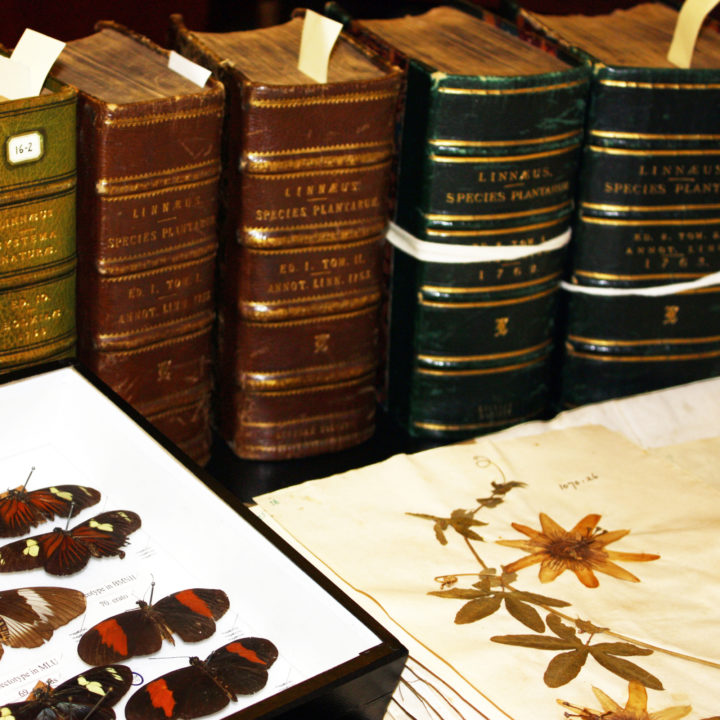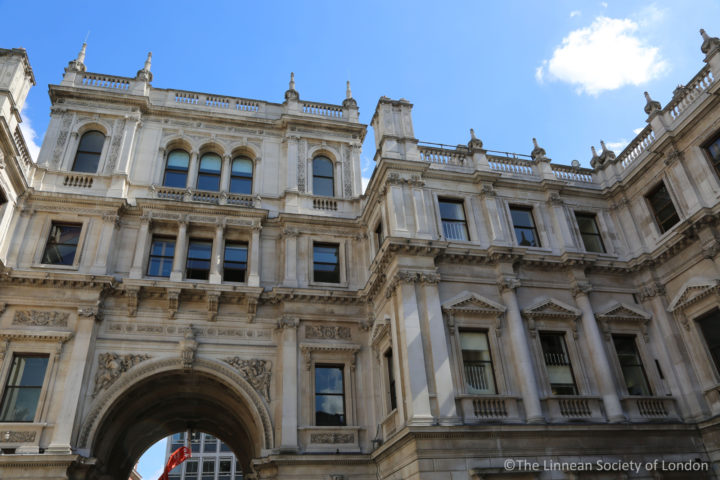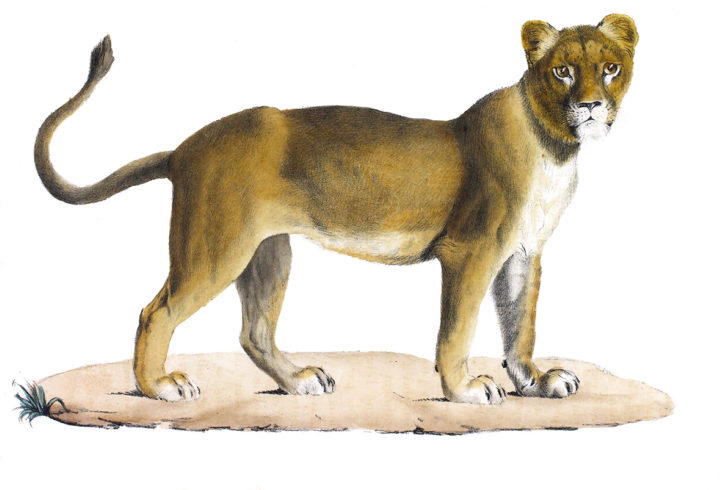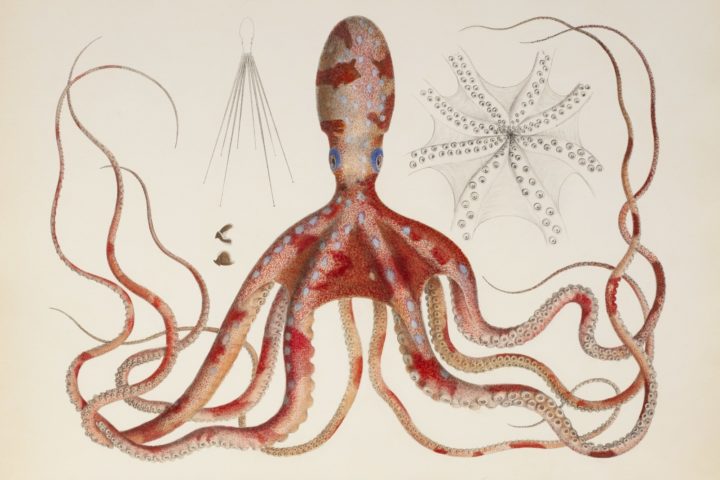The Evolving Learned Society
On 4 September our President Mark Watson shared how the Linnean Society must adapt and evolve to meet the challenges facing nature, charities and learned societies today. This is an edited extract from his talk.
Published on 7th November 2025
The only thing constant in life is change. Organisations cannot get stuck in their ways, and must change to meet new demands, or they may quickly find themselves falling behind. Learned societies are no different. They need to adapt and evolve to keep up with an ever-changing world, to meet the requirements of modern governance, and to fulfil the expectations of their beneficiaries.
The Linnean Society has seen major changes throughout its 237-year history, but arguably none so transformative as those we are going through today. Never before has our work towards a world where nature is understood, valued and protected been so important.
Everything changes

RFF-719
The existential threat to the natural world through biodiversity loss and climate change has focused attention for many in our community. For the Society itself, the often interconnected selection pressures faced include Charity Commission requirements, digital technologies, and Government stipulations over the lease of Burlington House.
Charities came into the spotlight in 2015 when governance failures of some major charities were splashed across mainstream media in the UK. With public confidence eroded, eyes turned to the Charity Commission for England and Wales for explanation. The Commission responded by publishing its Charity Governance Code in 2017 and tightening scrutiny over registered charities.
This Code brought governance at the Linnean Society into stark perspective as it had remained essentially the same since our foundation. We knew we needed to change, and to help guide this President Sandy Knapp led the Council in commissioning an external governance review in 2018. The review was tasked to:
- Advise on the structures of the Council and committees
- Suggest improvements to the Council skill sets
- Advise on staffing and management of staff.
The review made 16 far-reaching recommendations, and I am pleased to say that the Council has acted on all of these. Some of them have been fully implemented whilst others are a work in progress. As they say, good governance is a journey not a destination.
Among the recommendations, a personal highlight was being involved in the writing of a new Royal Charter and Bye-Laws. The working group tasked with this first met in June 2021 for what turned out to be a 3.5-year journey, far longer than any of us expected!
We now have a three-tier system of:
- Royal Charter (set by the Privy Council)
- Bye-Laws (set by the Fellowship)
- Standing Orders (set by the Council)
The new governing documents are now in legal effect and we now have a robust governance framework which will enable us to meet the challenges of the future.
Engaging with our Membership

© Linnean Society
Our members have always been one of the Society’s greatest assets. Throughout our history it has been our membership who have supported the Society through difficult times.
In 2024 we sent out a membership survey as part of our ongoing review. The results were very encouraging, showing strong agreement with the values that matter to our Society, the contribution of the members towards our mission, and the desire to attract a larger and more diverse membership.
Members take pride in the prestige, history and heritage of the Society, the impact of its work, the like-minded community we foster, the connection with others, their expertise, diversity and quality. Many feel the Society is part of their identity.
Collections in a digital world

© Linnean Society
Our collections are the beating heart of our Society. We were formed around Carl Linnaeus's own natural history collections, his library and his manuscripts, and our name reflects this. As founding President James Edward Smith was keen to point out, our name does not mean that we are disciples of Linnaeus, but rather it highlights that we are custodians of his collections and uniquely placed to use these to understand his writings, correct his errors, and improve on what he left imperfect. The Linnean collections are still important and relevant today. They are objects of study and discussion, underpinning biological classification and providing a window onto scientific thought of the 18th century.
We have been steadily imaging, transcribing and cataloguing more of our collections to democratise their use. Very recently we have migrated all our digital archives over to a new digital preservation platform and enhanced their metadata so that it’s much easier to find what you need.
The very successful Linnean Lens series - a free online show-and-tell of fascinating objects within our collections - regularly attracts several hundred online participants, and many more catch up with the recordings made available on YouTube. These, combined with our exhibitions and tours are attracting different audiences from around the world, notably humanities researchers who are now using our collections to study cultures and hidden histories.
Burlington House – our home

© Linnean Society
Burlington House was a significant driver for change and now that our tenancy is secure, it is our biggest opportunity for the future.
In 2005, after 130 years of rent-free occupation in purpose-built premises, a rent was levied by our landlord - the UK Government. This escalated beyond expectation, and by 2020 it became clear our home would rapidly be unaffordable, and in 5 to 10 years we would be forced out.
Working together with our neighbours, the Courtyard Societies, we launched the Save Burlington House campaign, running alongside our active engagement and negotiation with our landlords. All this hard work paid off, and in 2024 we secured a 999-year lease, on condition of enhancing public benefit to our local and national communities, as well as looking after our buildings in an environmentally sustainable way.
We now have security, we are our own landlords – and this brings both challenges and opportunities. These new costs and obligations make it more vital than ever to invest in our future: to reconfigure our building to make it more accessible, to upgrade our facilities, to make our home a welcoming and an inspirational place to those who visit. Our recently refurbished main staircase showcasing our collections is a stunning example of what can be done.
Our strategic Plan

F 599 GEO
Alongside our work to secure our building was bringing together an updated Strategic Plan, with a greater outward focus on benefit to nature and global society.
The first three pillars of the plan are about working to understand, value and protect the natural world by harnessing our membership; enabling vital research; and engaging society with the natural world. The fourth pillar is about ensuring that the Society has the people, platform and resources to deliver this vital mission.
Resourcing our future

F 594.5 FER
In the wise words of our first Treasurer Samuel Goodenough, you need money “to carry matters into effect”, and this is as true today as ever. To enact the changes we wish to see, the Society needs financial resources, as well as our expert and passionate community.
At present, our main source of income is our journals, income which enables us to undertake a wide range of charitable activities and community engagement which we enjoy today. But there are challenges in publishing today, with many Societies finding their publishing income under pressure, as more journals are being consolidated in the hands of a few for-profit publishers.
We are working hard to protect our publishing earnings, but we must also look to diversify our income. Membership contributions, while making up a smaller proportion of our overall funds, are still a greatly valued part of the Society’s revenue. More members would mean a greater contribution still, and we look to our current members to spread the word.
Donations and legacies are another important source of funds for the Society and help us achieve the charitable activities of our mission. In many cases they enable us to undertake valuable work which would otherwise be beyond our means. If you are able, please consider supporting the Society by donating to us or by leaving us a gift in your will.
The future
Our forebears would be deeply shocked at the state of our natural world today, but justly proud of our work in 'the cultivation of the science of natural history in all its branches’ - our purpose remains the same as it was in 1788 when our Society was formed.
We now have a solid platform on which to build. We have succeeded in securing our home in Burlington House – a landmark achievement which I have no doubt history will look back on as a pivotal event. We are also well along the road to modernising our governance and management systems. We are diversifying our activities and reaching a much wider audience.
But now, more than ever, we need your support to enable the Linnean Society to thrive and make real impact in championing nature throughout the world. We need your participation in activities, we need you to be advocates for our Society and for nature, and we need you to help build financial resilience - especially in growing our membership. If you would like to find out more about how you can help us, please email development@linnean.org.
I feel greatly privileged to be your President as we begin this new chapter in our history, and I look forward to working with you achieve our mission in cultivating a global community working for a world where nature is understood, valued and protected.
